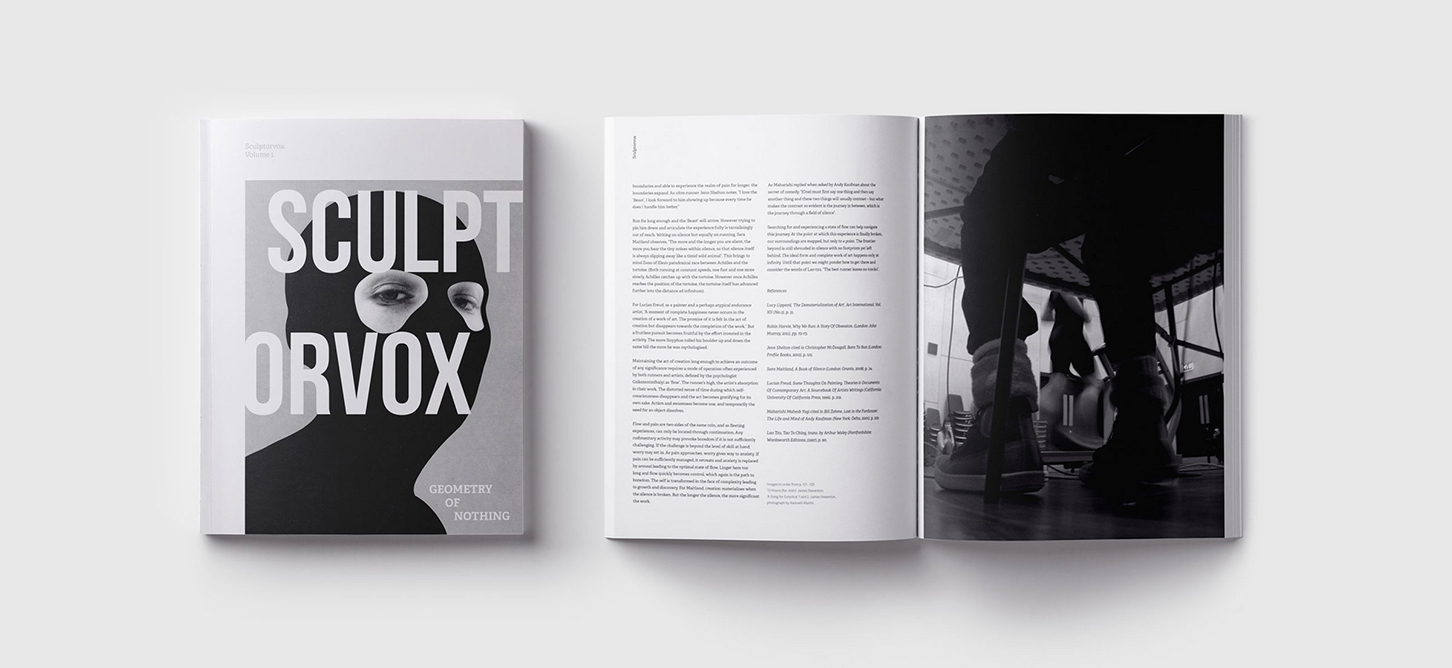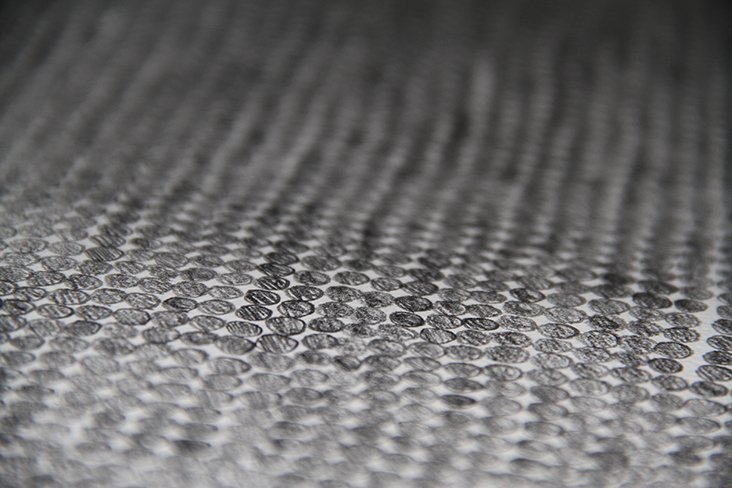
In the late sixties, so the apocryphal story goes, students at a London art college would be locked in a room with a breezeblock and not allowed out until they were sculptors. Roland Barthes was proposing that the birth of the reader was at the cost of the death of the author; and observing that much of the art practice produced in that period was taking place between Art as Idea and Art as Action, Lucy Lippard noted, “It is a balance of the mental and the physical, the territory of idea and the territory of materials and places. Each work, though not by definition conceptual, realises a particular idea; drawing together a sense of order and physical endurance.”1
The natural lineage of this is the emergence of endurance practices where the so-called death of the author is at least postponed. It’s not so much the breezeblock that’s important but the journey the captive sculptor has been on. The living experience of the creator is qualified through extended periods of duress, and this is what ultimately becomes significant for the audience (or in Barthes case, the reader).
Here we run in to difficulty. The art object is secondary to the experience and the more difficult the experience it is often more difficult to articulate. Writer and runner Robin Harvie observes that “pain takes no object, and like other interior states is impossible to express fully in the external shareable world … As runners, all we can do is map our surroundings, to note, submit, and file its geographical extremities. In return we are helped to chart our own physical limitations.”2 For artists who run, or indeed artists of other endurance practices, the art object may not be a representation of pain at all, but the essence of it.
By shifting our focus from representing to enduring we can map and explore our interior spaces. As we become familiar with these boundaries and able to experience the realm of pain for longer, the boundaries expand again beyond us. As ultra runner Jenn Shelton notes, “I love the ‘Beast’, I look forward to him showing up because every time he does I handle him better.”3
Run for long enough and ‘the Beast’ will arrive, however trying to pin him down and articulate the experience fully is always tantalisingly out of reach. Writing on silence but equally on running further, Sara Maitland observes, “The more and the longer you are silent the more you hear the tiny noises within silence, so that silence itself is always slipping away like a timid wild animal”4, reminiscent of Zeno of Elea’s paradoxical race between Achilles and the tortoise. (Both running at constant speeds, one fast and one slowly, Achilles chases down the tortoise. However once Achilles reaches the position of the tortoise, the tortoise itself has advanced further into the distance ad infinitum).
For Lucian Freud, as a painter and perhaps an atypical endurance artist, “A moment of complete happiness never occurs in the creation of a work of art. The promise of it is felt in the act of creation but disappears towards the completion of the work.”5 But a fruitless pursuit becomes fruitful by the effort in vested in the activity. The more Sisyphus rolled his boulder up and down the same hill the more he was mythologised.
Maintaining the act of creation for long enough so that the outcome is of any kind of significance to the audience requires a mode of operation often experienced by both runners and artists, defined by the psychologist Csikszentmihalyi as ‘flow’. The runner’s high, the artist’s absorption in their work. The distorted sense of time during which self-consciousness disappears and the experience becomes gratifying for it’s own sake. Action and awareness become one, and temporarily the need for an object dissolves.
Flow and pain are two sides of the same coin, and as fleeting experiences can only be located through continuation. Any rudimentary activity may provoke boredom if it is not sufficiently challenging. If the challenge is beyond the level of skill at hand, worry may set in. As pain approaches, worry gives way to anxiety. If pain can be sufficiently handled it retreats and anxiety is replaced by arousal leading to the optimal state of flow. Linger here too long and flow quickly becomes control, which is the path again to boredom. The self is transformed in the face of complexity leading to growth and discovery. For Maitland, creation materialises when the silence is broken. But the longer the silence the more significant the work.
As Maharishi replied when asked by Andy Kaufman about the secret of comedy, “[One] must first say one thing and then say another thing and these two things will usually contrast – but what makes the contrast so evident is the journey in between, which is the journey through a field of silence”.6
Searching for and experiencing a state of flow can help navigate these journeys. At the point this experience is finally broken our surroundings are mapped, but only up to a point. The frontier beyond is still shrouded in silence with no footprints yet left behind. The ideal form and complete work of art happens only at infinity. Until that point we might ponder how to get there and consider the words of Lao-tzu. “The best runner leaves no tracks”.7
1 Lucy Lippard, ‘The Dematerialization of Art’, Art International. Vol. XII (No.2), p. 31.
2 Robin Harvie, Why We Run: A Story Of Obsession. (London: John Murray, 2011), pp. 72-73.
3 Jenn Shelton cited in Christopher McDougall, Born To Run (London: Profile Books, 2010), p. 125.
4 Sara Maitland, A Book of Silence (London: Granta, 2008), p. 34.
5 Lucian Freud, Some Thoughts On Painting. Theories & Documents Of Contemporary Art: A Sourcebook Of Artists Writings (California: University Of California Press, 1996). p. 219.
6 Maharishi Mahesh Yogi cited in Bill Zehme, Lost in the Funhouse: The Life and Mind of Andy Kaufman (New York: Delta, 2001), p. 319.
7 Lao Tzu, Tao Te Ching, trans. by Arthur Waley (Hertfordshire: Wordsworth Editions, (1997), p. 90.
Originally published in Sculptorvox Volume 1, Geometry of Nothing
